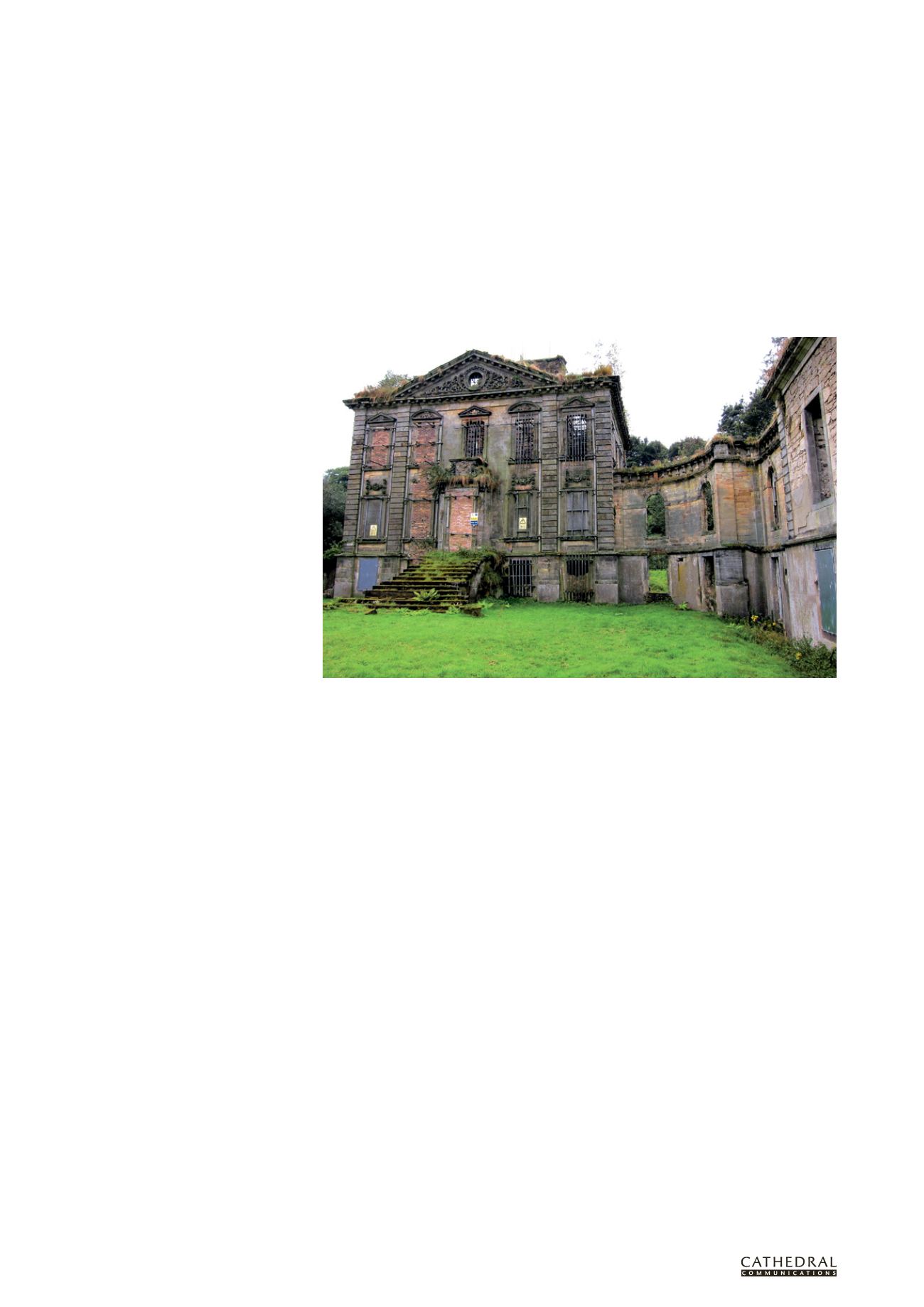
1 8 2
T H E B U I L D I N G C O N S E R VAT I O N D I R E C T O R Y 2 0 1 4
T W E N T Y F I R S T E D I T I O N
USEFUL INFORMATION
6
BUILDINGS AT RISK
SOME QUESTIONS AND SOLUTIONS
IAN LUSH
I
T IS
safe to say that anyone working,
volunteering or simply interested in the
UK’s historic environment would agree that
a historic building at risk is a ‘bad thing’. But
what exactly is a building at risk, how many
are there, how do they become at risk in the
first place and, most importantly, what is
being done about it?
The definition of a building at risk varies,
but usually involves inclusion on an official
list or register. This could be compiled by a
national body such as English Heritage or
Cadw in Wales, by a local authority, or by
a specialist third sector organisation like
The Theatres Trust or SAVE Britain’s Heritage.
Buildings are added to these registers because
of concerns about their physical condition,
neglect by their owners and/or lack of an
economically viable use. The proliferation of
registers and the fact that in most of England
only buildings listed at Grade I and Grade II*
are currently included on the registers
means that estimating the total number of
historic buildings at risk in the UK is difficult.
However, we do know the following:
In 2012 there were 5,831 entries on the
English Heritage Heritage at Risk Register
in England, which includes Grade I and II*
buildings (plus Grade II in London),
monuments, archaeological sites, landscapes,
battlefields, protected wrecks, places of
worship and conservation areas.
Current figures for Scotland, where
the register is maintained by the Royal
Commission on the Ancient and Historical
Monuments of Scotland on behalf of Historic
Scotland, show that there are 2,504 historic
buildings at risk.
The latest figures in Wales estimate c3,000
listed buildings to be at risk, around ten per
cent of the total.
In Northern Ireland there are over
420 listed buildings on the Built Heritage
At Risk Northern Ireland database, which is
maintained for the NI Environment Agency by
the Ulster Architectural Heritage Society.
Conscious of the fact that coverage of
Grade II buildings at risk in England on local
authority registers is, to say the least, patchy,
English Heritage has been considering ways
to address the gaps. Recently it commissioned
19 pilot studies where volunteers surveyed
Grade II buildings in different local authority
areas (rural and urban) to identify those
which are, or potentially may be, at risk. At
the time of writing, the results have not been
announced but early indications are that the
position in some of the areas surveyed was not
as bad as had been anticipated in numerical
terms, although some of the problems
identified were clearly serious ones.
This brings us on to the other questions
– the circumstances that lead to buildings
becoming at risk, and what is happening to
them. One of the most repeated truisms in the
heritage sector is that there is no such thing as
a problem building, just problem owners. This
is certainly the case for many at risk buildings,
but by no means all, and the issues tend to be
complex. Neglect, however, whether deliberate
or not, is undoubtedly one of the main causes
and it is remarkable, and very sad, how quickly
a building’s state can deteriorate once basic
maintenance is abandoned and a structure is
no longer protected from the elements.
There are many reasons why an owner
might neglect a building. In some cases this
will be deliberate – a developer has bought
the building for the value of the site rather
than the structure, has perhaps been turned
down for planning permission to demolish
and is allowing its condition to deteriorate in
the hope that permission may eventually be
granted. The statutory planning authorities
have a range of tools available to them to
tackle this situation, from urgent works
notices right up to compulsory purchase
orders, and some use them effectively and
speedily. Other authorities are daunted by the
relative complexity and potential cost of using
the legislation, or simply do not have staff with
the necessary knowledge and experience.
More recently, the recession and
commensurate decline in property values,
particularly outside London and South East
England, has left some private or commercial
owners with buildings worth far less than
they paid for them at the height of the boom
years, struggling with maintenance costs and
lacking an exit strategy. In some cases these
are buildings bought at auction without the
purchaser even having visited, never mind
having commissioned a survey or valuation,
in which case you may feel that their greed is
now reaping its just reward. In other cases,
however, historic buildings were bought
in good faith by private individuals who
genuinely hoped to restore or repair them
and either live in them or sell them. Those
individuals now find themselves out of their
depth, with mortgage debt exceeding the
property’s value and already considerably out
of pocket.
In some cases ownership of a building at
risk is convoluted and the owner is difficult to
trace. Even if the owner is tracked down, he or
she may be reluctant to enter into a dialogue.
Hastings Pier, for example, was until recently
Mavisbank House, a long-derelict villa near Edinburgh, which is the subject of a planned restoration project
coordinated by the Mavisbank Trust (All photos: AHF)


